Even though volume has been light in July, breadth has been strong, especially on the NYSE. Breadth is picking up steam on the Nasdaq as Net New Highs hit +91 and Net Advances exceeded +1000 for the third day in a row. Summer volume is supposed to be light so I will not worry about low volume at this point.
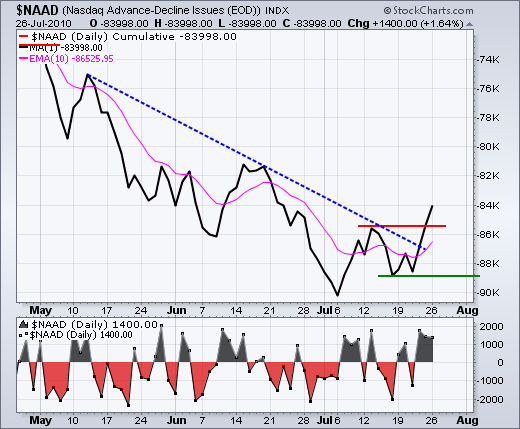

There is no change in the medium-term or short-term picture. On the daily chart, SPY broke above the wedge trendline and its mid July high. Last week's low around 106 becomes key support in the new uptrend. In the indicator window, RSI moved back into the 50-60 zone last week and closed above 60 on Monday to turn momentum bullish. Even though the market is looking stronger, keep in mind that SPY is up almost 9% from its July low and in a potential resistance zone around 112.
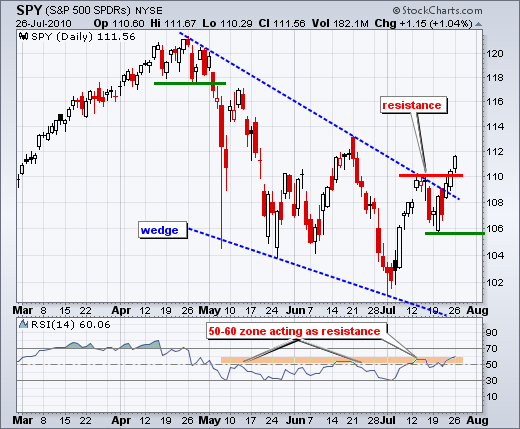
On the 30-minute chart, SPY reversed the mid July support break with a gap-surge above 109 last week. This surge recovered the prior day's losses and the gap held. RSI also moved above 60 to turn momentum bullish again. RSI has been bumping against 70 on Monday, which is both overbought and bullish. The 40-50 zone becomes support and a pullback into this zone could provide a second chance to enter the rally. The short-term trend remains up as long as SPY holds support at 106.5 and RSI holds the 40-50 support zone. A minor support level has been established at 108.9.
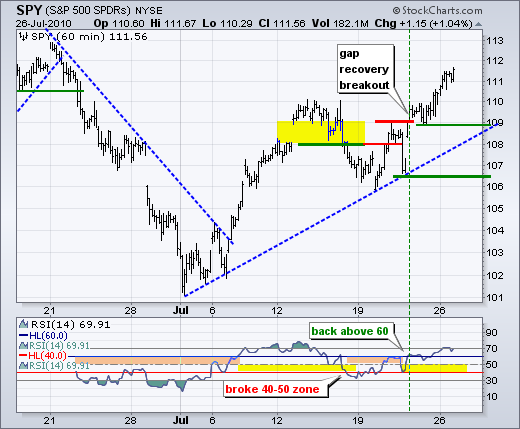
Key Economic Reports:
Mon - Jul 26 - 10:00 - New Home Sales
Tue - Jul 27 - 09:00 - Case-Shiller Index
Tue - Jul 27 - 10:00 - Consumer Confidence
Wed - Jul 28 - 08:30 - Durable Goods Orders
Wed - Jul 28 - 10:30 - Crude Inventories
Wed - Jul 28 - 14:00 - Fed's Beige Book
Thu - Jul 29 - 08:30 - Jobless Claims
Fri - Jul 30 - 08:30 - GDP
Fri - Jul 30 - 09:45 - Chicago PMI
Fri - Jul 30 - 09:55 - U Michigan Sentiment
Charts of Interest: AMZN, BOOM, DELL, FLEX, NVDA
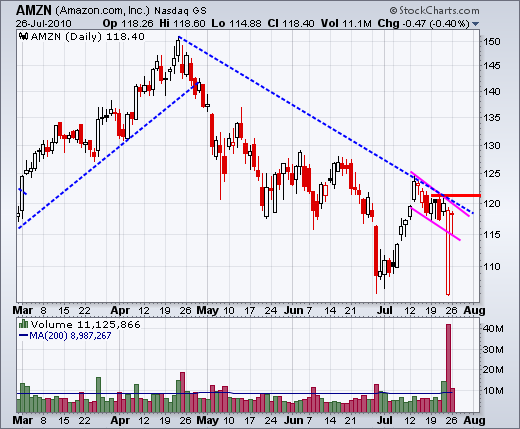

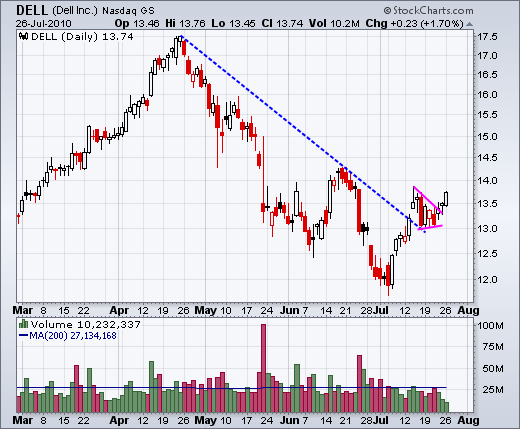
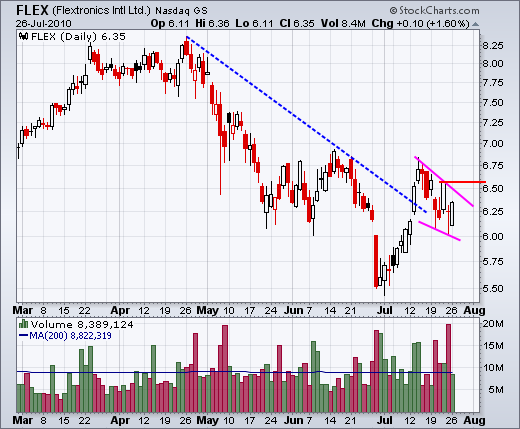
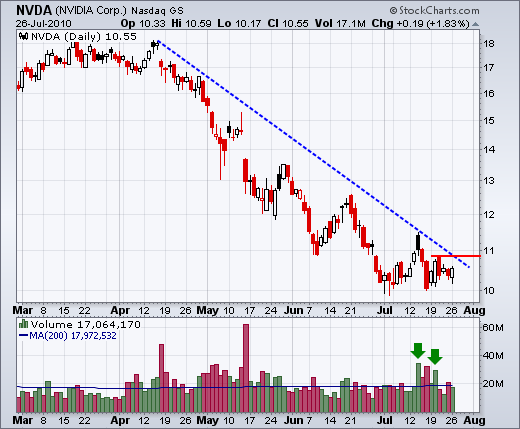
This commentary and charts-of-interest are designed to stimulate thinking. This analysis is not a recommendation to buy, sell, hold or sell short any security (stock ETF or otherwise). We all need to think for ourselves when it comes to trading our own accounts. First, it is the only way to really learn. Second, we are the only ones responsible for our decisions. Think of these charts as food for further analysis. Before making a trade, it is important to have a plan. Plan the trade and trade the plan. Among other things, this includes setting a trigger level, a target area and a stop-loss level. It is also important to plan for three possible price movements: advance, decline or sideways. Have a plan for all three scenarios BEFORE making the trade. Consider possible holding times. And finally, look at overall market conditions and sector/industry performance.

About the author:
Arthur Hill, CMT, is the Chief Technical Strategist at TrendInvestorPro.com. Focusing predominantly on US equities and ETFs, his systematic approach of identifying trend, finding signals within the trend, and setting key price levels has made him an esteemed market technician. Arthur has written articles for numerous financial publications including Barrons and Stocks & Commodities Magazine. In addition to his Chartered Market Technician (CMT) designation, he holds an MBA from the Cass Business School at City University in London.
Learn More